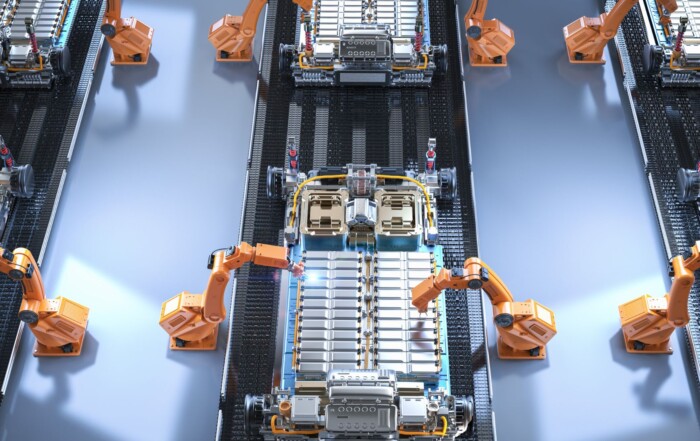Is smart technology really smart?
Smart technology: trend or innovation
Whether a wristwatch or a whole interconnected set-up of technical systems or devices. The future of technology is smart. The smart home makes life more secure and more convenient. But smart is not always smart. Is the use of trendy technology always an asset in our day-to-day life?
When is technology smart?
Smart technology is used to make our life easier and more convenient. Technical devices and systems assist us in day-to-day activities and are meant to adapt to personal needs. While simple time switches used to be referred to as smart, today the term smart applications brings to mind, for example, the app-based remote control of your smart home. Through networking and internet connectivity, everyday objects can be controlled even from another location.
Smart technology on the rise
The modern home is increasingly being equipped with smart technology. Despite certain critics and expensive purchasing costs, the market for smart devices is booming, whether it be networked refrigerators, smart energy and temperature solutions, security technology, or little helpers such as voice-operated assistance systems. Little by little, entire smart home systems are entering the household. Soon, most people will routinely check the contents of their refrigerator from their workplace, start the washing machine, or briefly air out their apartment via app. Everything is monitored, recorded, and remote-controlled. We give the order and the electronics obey. Even on holiday, people will stay in control and use their smartphones to switch off that light they accidentally left on at home.
But how smart is technology really when you need to tell it what to do?
A technical innovation proves beneficial if it has a positive impact on our lives and at the same time doesn’t impose any major restrictions or changes. (Only with a discreet aid do our day-to-day lives attain maximum convenience.) App-based control does not always prove advantageous. Controlling energy consumption or organising housekeeping via app on holiday or during a break makes for excellent multitasking, however, it does not necessarily make life easier in terms of recovery and convenience. Truly smart technology thinks for itself. Would automatic lighting control not be more intelligent, for instance? On holiday, no thoughts would have to be wasted on energy efficiency or security. That oven you forgot about would automatically switch off on its own as soon as you left the house for a longer period of time. The idea of automation is currently getting a bit lost due to the abundance of trendy apps.
Home automation is smart
With home automation, light, power consumption, temperature, or security technology is controlled according to needs. Integrated sensors usually form the basis for this. The range of applications for radar sensors in smart homes alone is incredibly broad. Whether it be the height adjustment of the toilet seat, reminder function, lighting control, alarm function, triggering of an interaction with appliances when entering the room, optimising energy consumption, surveillance function, or innovative gesture control.
The full possibilities of sensors have not nearly been exhausted with existing applications. Control of lighting, air conditioning, or heating systems depending on the presence of people has been proven to be able to be efficiently automated. High-tech devices can be used in an energy-saving manner and controlled intelligently by means of motion detection and speed. The contactless operation of switches is also increasingly entering homes thanks to its hygienic benefits. A smart security concept automatically regulates the lock of the house in the event that users are absent, triggers alarms, and indicates whether the children have arrived safe and sound from school. Sensors in the fields of home automation and intelligent control bear significant potential particularly when combined with technical devices or other technologies. Due to people’s desire for convenience, the automation of day-to-day activities in the household will prove to be a major topic alongside networking and related technologies such as radar sensors. The future living environment will now benefit from discreetly integrated sensors that support us in everyday life like an invisible butler.
Smart is not always smart
When referring to technology which permanently demands active operation and thus burdens us with additional tasks, the use of the term “smart” is questionable. Only the automation of processes and adaptation to our individual circumstances truly demonstrate intelligent everyday solutions. Home automation makes app-based control superfluous in some cases and presents good alternatives, especially for older generations, who struggle with technological transition, as well as for data protection sceptics. In order to boost our quality of life, the future smart home will exploit automation in order to free us from management tasks and the compulsive need for control. By detecting our habits and analysing data, intelligent technology will adjust more and more to suit our needs. That said, an app is a great gimmick: the control and surveillance of our homes allows us to keep track of everything and stay connected, while enabling us to perform spontaneous adjustments. Whether the use of intelligent technology is smart depends on the individual requirements and needs.
picture: ©GKSD – stock.adobe.com
Share this Content
Building Automation & Smart Home
Contactless and intelligent control for modern technology
Radar sensors take on many tasks for us, thus making our everyday lives easier, safer, and more efficient. They are a kind of sensory organ for objects for perceiving their surroundings. These technological assistants open up new possibilities for operating devices: contactless interaction between humans and devices. The sensors are the link for triggering or automating certain actions without contact or automating them.


